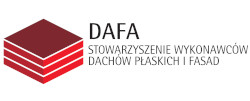prof. dr hab. inż. Janusz Bujak, dr inż. Magdalena Nakielska, dr inż. Ryszard Okoński, Uniwersytet Technologiczno-Przyrodniczy w Bydgoszczy, Wydział Budownictwa, Architektury i Inżynierii Środowiska
dr inż. Sebastian Majkowski, PPM PROMONT Bujak Sp. z o.o. – Sp.K.
Adres do korespondencji: Ten adres pocztowy jest chroniony przed spamowaniem. Aby go zobaczyć, konieczne jest włączenie w przeglądarce obsługi JavaScript.
DOI: 10.15199/33.2018.05.06
(Studium przypadku)
W artykule przedstawiono wyniki badań, eksperymentalnej instalacji termicznego przekształcania odpadów medycznych, dotyczących strat strumienia ciepła do otoczenia przez zewnętrzną powierzchnię pieca obrotowego. Badania wykazały, że konstrukcja ścian pieca obrotowego ma istotny wpływ na straty strumienia ciepła do otoczenia. Wskazano przykłady rozwiązań konstrukcyjnych ścian pieca obrotowego i wynikającą z ich zastosowania redukcję przepływu strumienia ciepła do otoczenia.
Słowa kluczowe: piec obrotowy; termiczne przekształcanie odpadów medycznych; straty ciepła.
***
The heat loss flux through external surfaces of the rotary kiln
The article presents the results of experimental research on the installation of thermal treatment of medical waste focus on loss of heat flow to the environment through the external surface of the rotary kiln. Tests have proven that the wall structure of a rotary kiln has a significant effect on heat flow losses to the environment. Examples of constructional solutions of rotary kiln walls and the resulting reduction in the flow of heat flux to the environment were shown.
Keywords: rotary kiln; thermal treatment of medical waste; heat loss.
Literatura
[1] Bujak Janusz. 2015. „New insights into waste management –Meat industry”. Renewable Energy vol. 83: 1174 – 1186.
[2] Bujak Janusz. 2015. „Thermal treatment ofmedicalwaste in a rotary kiln”. Journal of Environmental Management – Elsevier vol. 162: 139 – 147.
[3] Chaerul Mochammad,Tanaka Masaru, Ashok V. Shekdar. 2008. „A system dynamics approach for hospital waste management”.Waste Management (28): 442 – 449.
[4] Directive 2010/75/EUof the European Parliament and of the council of 24November 2010 on industrial emissions (integrated pollution prevention and control).
[5] Ferraz Alvim, Cardoso Barcelos, Ribeiro Pontes. 2000. „Concentration of atmospheric pollutants in the gaseous emissions of medical waste incinerators”. Journal of the Air and Waste Management Association (50): 131 – 136.
[6] Ferraz Alvim, Afonso Sérgio. 2003. „Dioxin emission factors for the incineration of different medical waste types”. Archives of Environmental Contamination and Toxicology (44): 460 – 466.
[7] GrochowalskiAdam. 1998. „PCDDs and PCDFs concentration in combustion gases and slags from incineration of hospital wastes in Poland”. Chemosphere (37): 2279 – 2291.
[8] Yong-Chul Jang,Cargro Lee, Oh-SubYoon, Hwidong Kim. 2006. „Medical waste management in Korea”. Journal of Environmental Management (80): 107 – 115.
[9]WoolridgeAnne, Paul S. Phillips,AnthonyR.Denman. 2008. „Developing amethodology for the systematic analysis of radioactive health care waste generation in an acute hospital in the UK”. Resources. Conservation and Recycling (52): 1198 – 1208.
[10] Yang Won, Hyung-sik Nam, Sangmin Choi. 2007. „Improvement of operating conditions in waste in cinerators using engineering tools”. Waste Management(27): 604–613.
[11] Zimmer Catherine, McKinley Deb. 2008. „New approaches to pollution prevention in the healthcare industry”. Journal of Cleaner Production (16): 734 – 742.
Przyjęto do druku: 08.03.2018 r.
Materiały Budowlane 05/2018, str. 17 (spis treści >>)




























